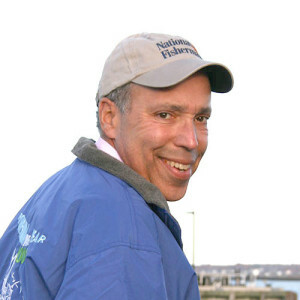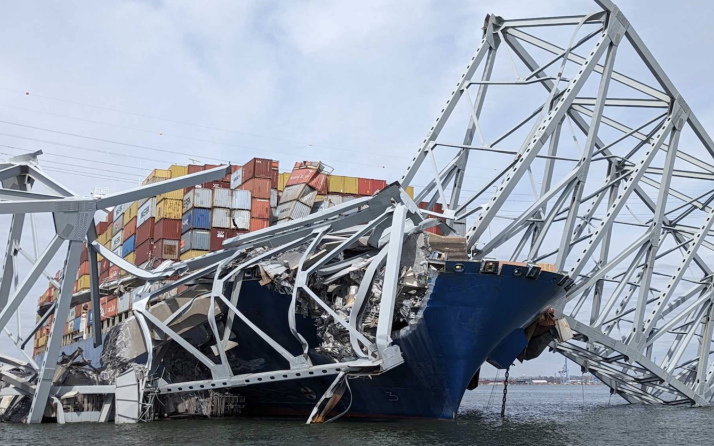It may take some time to sort out what went so wrong March 26 aboard the container ship Dali that its 95,000 tons were left to drift helplessly down on Baltimore’s Francis Scott Key Bridge.
Often, accidents like this represent the sad end of a chain of events. This is especially true when complex systems are involved. For example, shortcomings in design, redundancy, and training all played a part in the loss of two Boeing 737 Max jets in 2018 and 2019. (Sometimes the chain can be broken: In at least one case, a pilot was able to recover a Max jet that had entered an uncommanded dive.)
The Dali is a fairly new vessel, having been built in 2015. Its most recent inspection reportedly found only a minor deficiency. When the ship’s lights went out as it neared the Key bridge, the pilot called tugboats to assist, ordered an anchor lowered and attempted to turn the ship away.
Responding to the ship’s mayday, police shut off traffic to the bridge. As a result, no motorists were pitched into the water. But eight laborers — immigrants launching their American dreams from the deck of a bridge — went down with the Key bridge, which collapsed so quickly that a real-time YouTube video seems like a simulation.
Quite a few years ago, when I was captain of a 65' trawler based in Portsmouth N.H., our comings and goings were punctuated by passage beneath a pair of drawbridges spanning the Piscataqua River. The Piscataqua is known for its five-knot tide, so I would radio the operator of whichever bridge I was approaching as soon as I figured he could see us or make out our lights, and ask for a lift of 60', to accommodate the mast.
He typically responded, “Come along, sir.” Red lights flashed, traffic gates fell, a siren wailed, and soon enough the center span would rise.
If we were stemming the tide, it was a carefree business: Should there be a delay, I could simply take the Princess out of gear. But there was never a delay.
Until the night there was. We were fair tide — of course. I have no doubt the bridge operator warned me, but when I asked for a lift, my mind heard what I expected to hear — “Come along, sir” — and I kept coming. I was a few hundred yards below the bridge when it dawned on me cars were still crossing.
I still had river enough to turn around, even with the tide pushing us. It was an opportunity lost. The bridge soon loomed ahead of us. I called the operator again and reminded him we were fair tide. “I’ve got a man indisposed,” he replied.
Was someone on the throne? I wondered. The guys on deck began looking back and forth, first at the bridge and then at me.
It did not require much imagination to see how this might unfold. The deck of the bridge was not very high. The mast would catch it, spin us around, and lever the Princess onto its side as the tide continued to push the hull upriver. The water was frigid and the tide was overpowering. The ballgame would be over.
I put the Princess into reverse and went to full throttle, knowing it was a futile gesture.
I was out of ideas when the siren began to wail, and the gates began to flash. The bridge began to lift. It was going to be close. Dismasting was not out of the question even if we didn’t roll over. I leaned out of the wheelhouse door and looked up as the mast passed beneath the still-rising span. I remember thinking it was quiet — we were usually wide open as we steamed under the bridge — and I heard the Loran antenna whip the underside of the bridge.
But we’d made it. I called the bridge operator to thank him for the lift, as was customary.
“Good night, sir,” he said.
No question: I got away with screwing up on that night four decades ago. Complacent and lacking in situational awareness, I fell victim to confirmation bias — I expected to be told the bridge would go up, so I assumed that’s what I’d been told.
All’s well that ends well. Until a week ago I had all but forgotten that night.
Modern cargo ships rely on complex systems comprising diesel engines, pumps, and generators, all overseen by computers, and in turn, by a living, breathing system — the crew. Yet for all of those vulnerabilities, no horrible screwups have been uncovered aboard the Dali as yet. Six people died just the same, hurled into in the water as the bridge collapsed, and the calamitous impacts to transportation and commerce are still unfolding.
Sometimes there is no pat explanation. Sometimes, as the pioneering aviator and writer Ernest K. Gann observed so many years ago, fate is the hunter.





